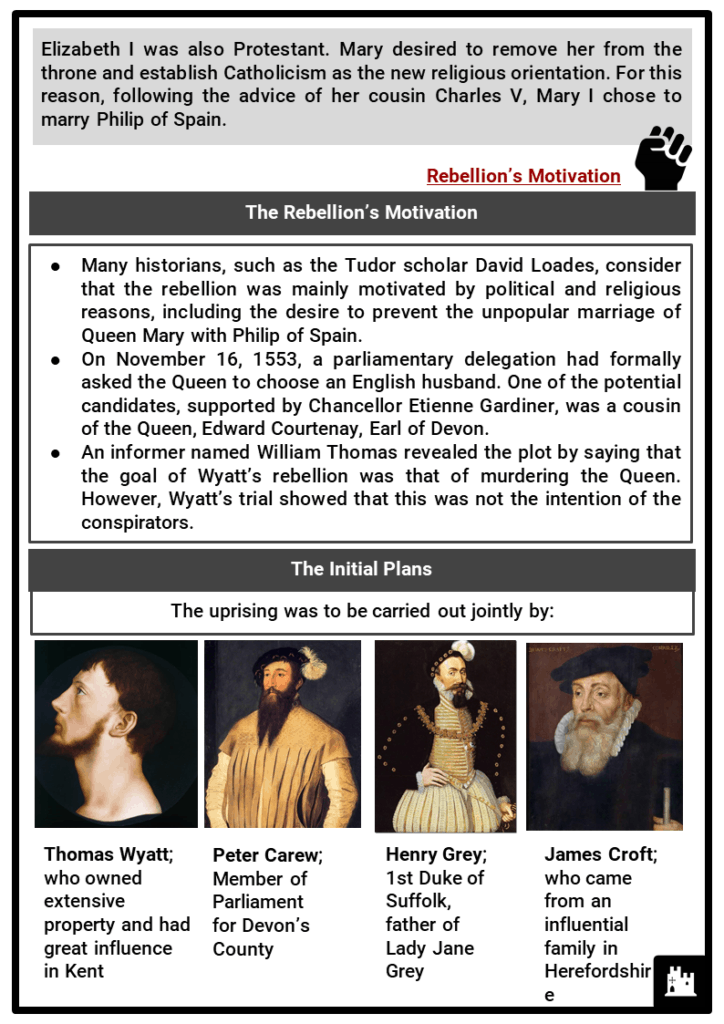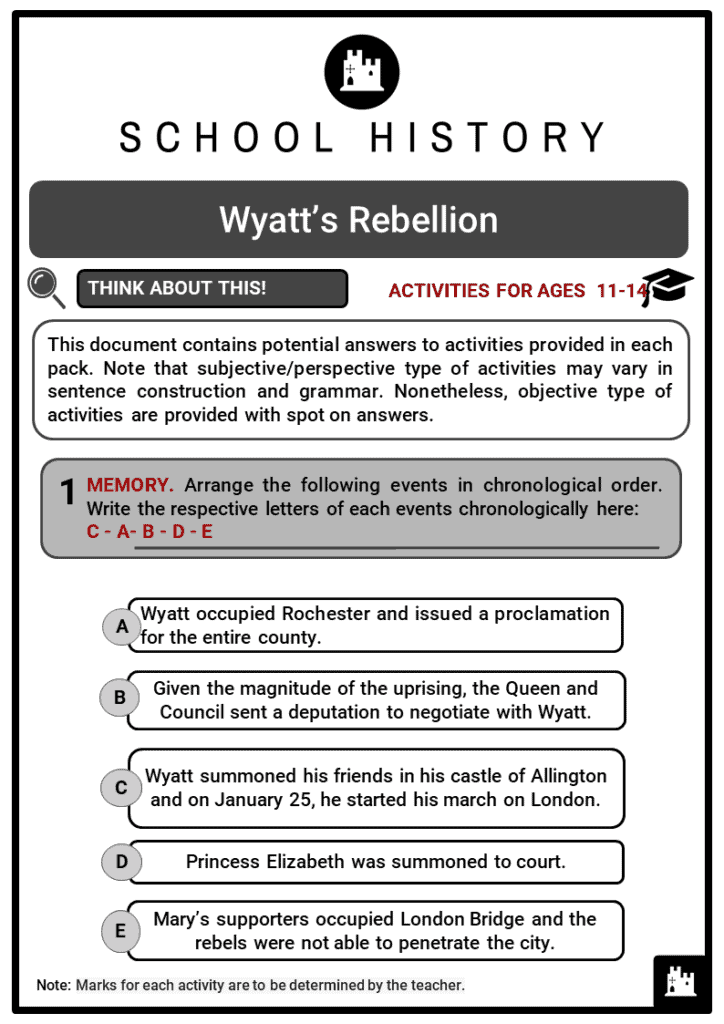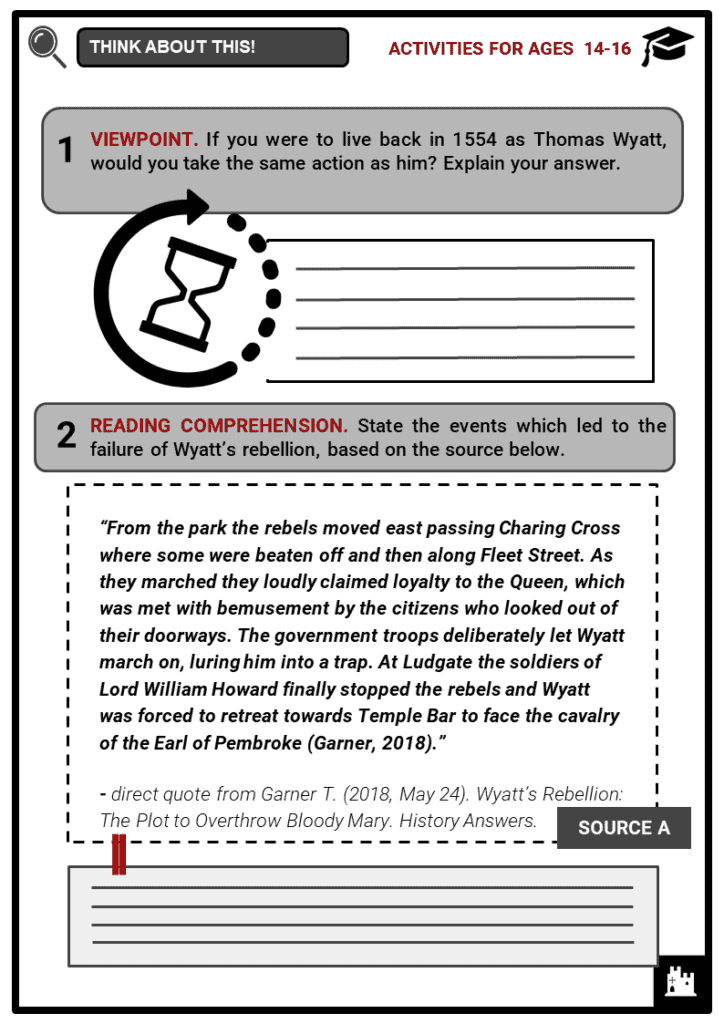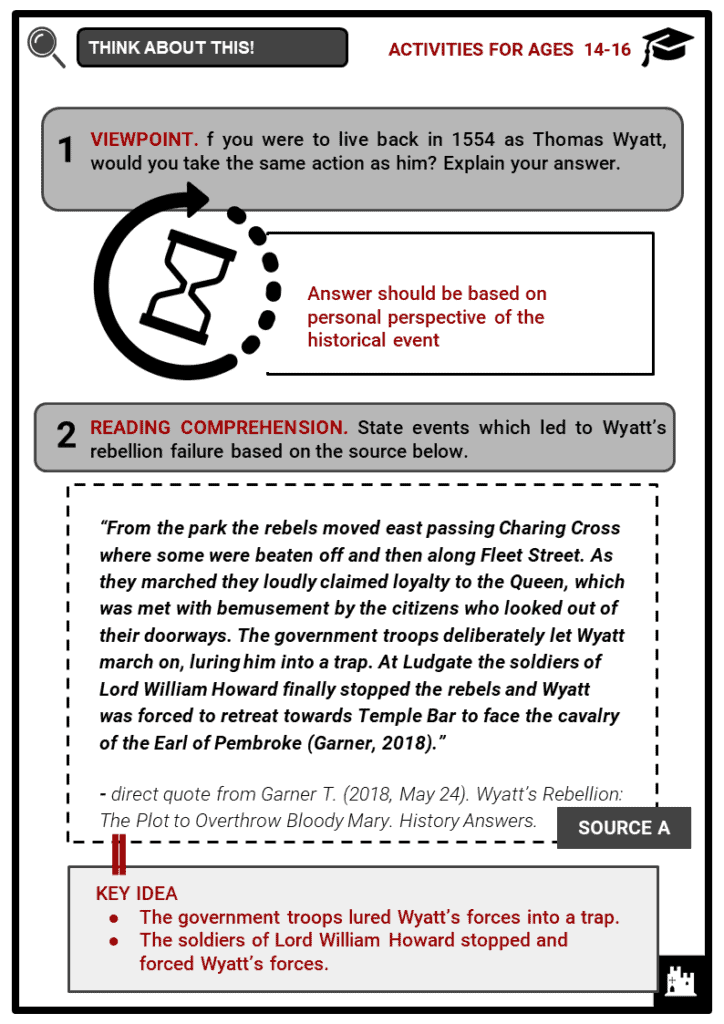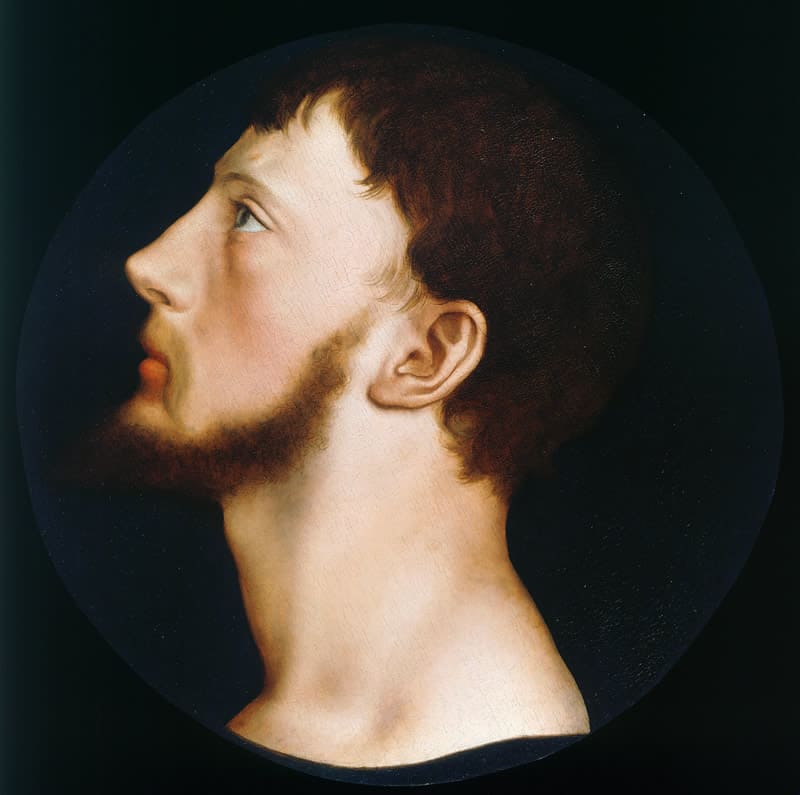Download Wyatt’s Rebellion Worksheets
Do you want to save dozens of hours in time? Get your evenings and weekends back? Be able to teach Wyatt’s Rebellion to your students?
Our worksheet bundle includes a fact file and printable worksheets and student activities. Perfect for both the classroom and homeschooling!
Table of Contents
Add a header to begin generating the table of contents
Summary
- The reason which prompted the rebellion.
- The people and forces behind the rebellion.
- Consequences brought by the failure of the revolt.
- Thomas Wyatt’s background.
Key Facts And Information
Let’s know more about Wyatt’s Rebellion
- The Wyatt Rebellion, or Wyatt Revolt, was an uprising that took place in England in 1554, named after its leader, Thomas Wyatt the Younger.
The rebellion arose from the determination of Queen Mary I to take Philip of Spain for a husband. This choice of a foreign marriage was unpopular among the English. - During his brief reign between 1547 and 1553, Edward VI, succeeding his father Henry VIII, imposed the Protestant Reformation. When Edward died in 1553, his half-sister, the Catholic Mary Tudor was the rightful heiress. However the former King, wanting to preserve the Protestant religious orientation, designated as his successor Lady Jane Grey.
- Elizabeth I was also Protestant. Mary desired to remove her from the throne and establish Catholicism as the new religious orientation. For this reason, following the advice of her cousin Charles V, Mary I chose to marry Philip of Spain.
Rebellion’s Motivation
The Rebellion’s Motivation
- Many historians, such as the Tudor scholar David Loades, consider that the rebellion was mainly motivated by political and religious reasons, including the desire to prevent the unpopular marriage of Queen Mary with Philip of Spain.
- On November 16, 1553, a parliamentary delegation had formally asked the Queen to choose an English husband. One of the potential candidates, supported by Chancellor Etienne Gardiner, was a cousin of the Queen, Edward Courtenay, Earl of Devon.
- An informer named William Thomas revealed the plot by saying that the goal of Wyatt’s rebellion was that of murdering the Queen. However, Wyatt’s trial showed that this was not the intention of the conspirators.
The Initial Plans
- The uprising was to be carried out jointly by:
- Thomas Wyatt; who owned extensive property and had great influence in Kent
- Peter Carew; Member of Parliament for Devon’s County
- Henry Grey; 1st Duke of Suffolk, father of Lady Jane Grey
- James Croft; who came from an influential family in Herefordshire
Rebellion’s Plans
- Each had to take the lead of the rebels in their four counties and converge on London on March 18, 1554. Mary was replaced on the throne of England by her half-sister Elizabeth, who would have subsequently married Edward Courtenay. Other conspirators, besides Courtenay, were involved, including Nicholas Throckmorton and the mathematician Leonard Digges. The French ambassador Antoine de Noailles could only be favourable to the movement knowing that the union of the crowns of Spain and England could not support the French interests.
- Simon Renard, the Imperial Ambassador to England, having suspected the plot, informed Lord Chancellor Stephen Gardiner. It also appeared that Wyatt’s letters, notably to Elizabeth, were intercepted by the British government agents. On January 21, Edward Courtenay was arrested and confessed voluntarily.
- The next day, James Croft, realising that the circumstances were no longer favourable, abandoned the enterprise. Henry Grey was more determined but could only reunite 140 rebels. He was not able to take Coventry and spontaneously surrendered. Henry Grey was tried and beheaded, along with his daughter Jane Grey, and his son-in-law Guilford Dudley. Peter Carew tried to raise a rebellion in Exeter (in Devon), but Protestant nobles were reluctant to take part, and the population was mostly Catholic. Moreover, the repressive role he had played in the past damaged his reputation. Although an arrest warrant was issued, Carew managed to flee to Normandy.
- Only Wyatt managed to create enough upheaval. On January 22, 1554, he summoned his friends in his castle of Allington and on January 25, he started his march on London.
The Rebellion
- Wyatt occupied Rochester and issued a proclamation for the entire county.
- Initially, the Queen’s supporters, commanded by Lord Abergavenny and Sheriff Sir Robert Southwell, appeared to be able to quell the insurgency, with rebel forces only reaching 500 men at Hartley Woods on January 28th. But the Spanish marriage was very unpopular, and Kent, which was the county of Lollards, had been among the most dissatisfied in England.
- The men of Abergavenny and Southwell joined forces with Wyatt bringing their total to 3,000 men.
- A detachment of the London militia was sent against him under the command of the Duke of Norfolk. But most of them joined the rebels and the Duke fled to London. Wyatt’s rebel troops now amounted to 4,000 men.
- Princess Elizabeth was summoned to court; she was incarcerated at the Tower of London from March 18 to May 19, and then placed for one year under house arrest at Woodstock Castle. Given the magnitude of the uprising, the Queen and Council sent a deputation to negotiate with Wyatt. The insolence of the Queen’s demands made Wyatt lose sympathy. Mary, for her part, was able to rally the capital to her cause by holding a brave speech on February 1 at the City Hall.
The Wyatt Rebellion
- Wyatt’s army reached Southwark on February 3rd. Mary’s supporters occupied London Bridge and the rebels were not able to penetrate the city. Wyatt was driven out of Southwark by the threats of Lord Chandos, ready to fire the cannon on the outskirts from the Tower of London.
- Refusing to give up, the rebels headed for Kingston, but they were stopped at the city gates. The rebel army retreated on 7 February 1554.
Consequences
- Having failed in his uprising, Wyatt was obliged to surrender on February 7. He was tried and executed with about 90 rebels, most of whom are hanged. Wyatt himself was tortured for a long time in the hope of snatching confessions involving Elizabeth.
- He was beheaded at Tower Hill on April 11.
- Edward Courtenay was exiled.
- Lord Thomas Grey and William Thomas were both executed.
- Throckmorton was found not guilty and was released.
- Nicholas Arnold, along with some other leaders, was never brought to trial and was eventually pardoned.
- Peter Carew was jailed but released.
- James Croft was tried and convicted, but eventually pardoned.
- William St Loe also managed to avoid punishment.
- Elizabeth was questioned and threatened but was eventually spared due to lack of evidence.
- The rebellion proved disastrous for the Wyatt family. They lost their title and their lands, including their family home, Allington Castle. However, when Elizabeth, in turn, ascended the throne, she returned the titles and land to a distant relative of the family.
About Thomas Wyatt
- Born in Kent in 1503 and a student at the University of Cambridge, after his studies Wyatt spent most of his life travelling around Europe, discovering and deepening the humanist poetics and knowing the poetry of Petrarch in Italy, as well as acquiring great skills as a translator and interpreter.
- There were rumours of his relationship with Anne Boleyn. George Wyatt – the poet’s nephew – expressed in some of his writings the belief that several of his uncle’s sonnets, such as the most passionate, were inspired by his relationship with Anne Boleyn, and he argued that the sonnet Whoso was dedicated to the King’s wife, describing her as unreachable and belonging to the King:
- In 1520 Thomas Wyatt married Elizabeth Brooke although, according to many, it was a forced choice. In 1525 Wyatt accused his wife of adultery and separated from her; it was at that time that his interest in Anne seemed to have intensified.
- He experienced incarceration in the Tower of London twice: in 1536 on the charge of having been a lover of Anne Boleyn, who had meanwhile become queen, but he was then released probably thanks to his friendship (and that of his family) with Prime Minister Thomas Cromwell; and in 1541, he was incarcerated with a grave accusation of high treason; but the intervention of Henry VIII granted him grace. He died in 1542 at the age of 39.
Image sources:
[1.] https://upload.wikimedia.org/wikipedia/commons/7/77/HolbeinThomasWyatt.jpg


